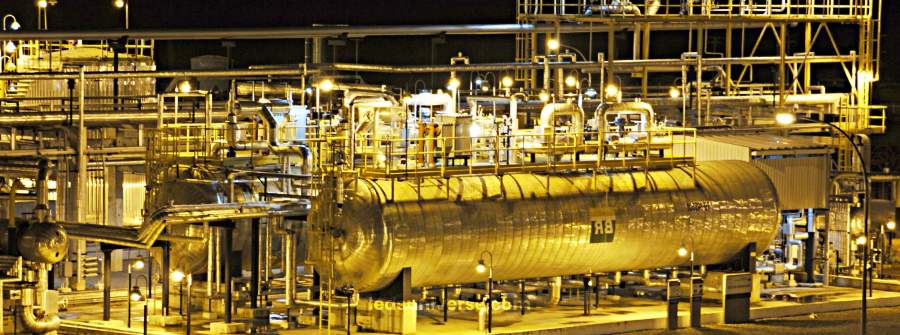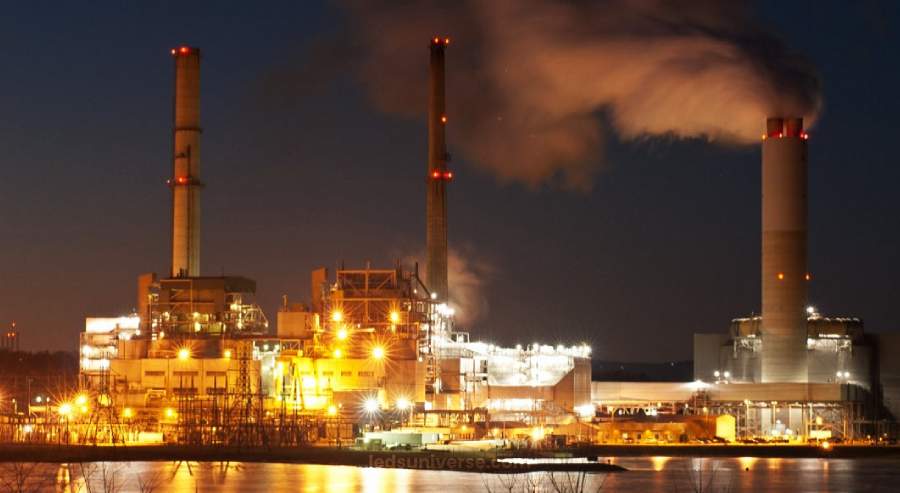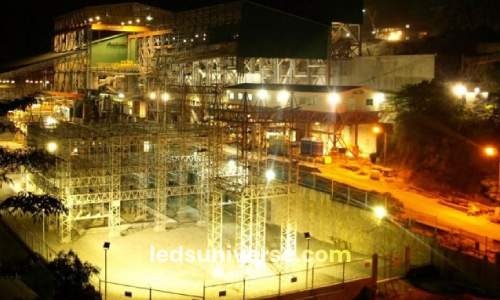Lighting in power plants is more than just a practical necessity—it’s a fundamental aspect of ensuring safety, efficiency, and operational excellence. From the precision required in control rooms to the expansive illumination needed for outdoor areas, the demands on power plant lighting are unique and rigorous.
Power plants operate in high-stakes environments where safety and reliability are paramount. We will talk about the essential aspects of power plant lighting, including lighting requirements, the advantages of LED technology, explosion-proof considerations, and maintenance strategies.
Reach out for free lighting consultation
Table of Contents
TogglePower plants demand specialized lighting solutions due to their complex operational environments. The primary goal is to ensure that all areas, from control rooms to outdoor perimeters, are adequately illuminated to prevent accidents and enhance operational efficiency.
Indoor lighting in power plants must provide high contrast to ensure that all tasks can be performed with precision. This is particularly important in areas such as control rooms, where operators need clear visibility of complex controls and gauges. LED lights are particularly suited for this purpose because they offer high luminance and contrast, which are essential for accurate readings and operations.
Outdoor areas, including perimeters and access roads, require robust and expansive lighting solutions. Power plant outdoor lighting must cover large areas and withstand environmental conditions. LED fixtures are ideal for this setting due to their durability and energy efficiency, helping to reduce operational costs and maintain safety in expansive outdoor areas.

In the high-risk environment of power plants, explosion-proof lighting is essential for maintaining safety. The volatile nature of power plants—where flammable materials and high-pressure operations are common—necessitates lighting solutions specifically engineered to mitigate the risk of explosions and fires.
Explosion-proof lighting fixtures are meticulously designed to operate safely in hazardous environments. These lights are engineered to prevent any internal sparks or excessive heat from escaping and igniting flammable gases or dust that may be present in the plant. The design typically includes robust enclosures and sealed components that contain any potential hazards within the fixture itself.
The construction of explosion-proof lights adheres to stringent international safety standards to ensure reliability. The National Fire Protection Association (NFPA) and the International Electrotechnical Commission (IEC) set forth rigorous guidelines for these fixtures. For instance, NFPA 70, also known as the National Electrical Code (NEC), provides detailed requirements for explosion-proof electrical equipment, while IEC 60079 outlines standards for electrical apparatus used in explosive atmospheres.
These standards dictate the materials and design features required to ensure that explosion-proof lighting can withstand the rigors of its environment. For example, the fixtures often feature heavy-duty metal housings, reinforced glass lenses, and specialized gaskets to prevent any leakage of hazardous materials. They are also tested for durability under extreme conditions, including high temperatures and pressure variations.

The installation of explosion-proof lighting requires specialized knowledge and adherence to safety protocols to ensure that the fixtures perform as intended. Qualified professionals with experience in handling hazardous environment installations must conduct the installation. This includes ensuring that all components are correctly sealed and that the lighting fixtures are securely mounted to prevent any movement that could compromise their safety.
During installation, it is crucial to verify that all electrical connections are properly insulated and that the fixtures are correctly grounded. This prevents the risk of electrical faults that could lead to dangerous sparks or overheating. Additionally, proper training for maintenance staff is essential to handle these fixtures safely and effectively.
Regular maintenance is vital to ensure the continued functionality and safety of explosion-proof lighting. Maintenance routines should include inspecting the integrity of the fixtures, checking for any signs of wear or damage, and ensuring that all seals and gaskets are intact. Any broken or compromised components must be replaced promptly to maintain the safety standards required for explosive environments.
Routine inspections should also involve testing the functionality of the lights and checking that they are operating within the specified parameters. This helps to identify and address any issues before they escalate into more significant problems. Maintaining accurate records of inspections and maintenance activities is also crucial for compliance with safety regulations and for tracking the performance and longevity of the fixtures.
LED technology has revolutionized power plant lighting, offering numerous benefits that enhance both safety and efficiency.
| Advantage | Description |
|---|---|
| Longer Lifespan | LEDs can operate for up to 100,000 hours, significantly reducing the frequency of replacements and maintenance tasks. This is especially beneficial in power plants where replacing lights is challenging and disruptive. |
| Energy Efficiency | LED lights consume significantly less energy compared to traditional lighting sources. This results in lower electricity costs and a reduced environmental impact, contributing to a more sustainable operation. |
| Flexibility and Control | LED lights offer exceptional flexibility in installation and operation. They can be easily adjusted to meet the specific lighting needs of different areas within the plant. Many LED systems also include wireless control options for remote adjustments and customization. |
| Low Heat Emission | LED lights produce minimal heat compared to incandescent or halogen bulbs. This helps maintain a stable temperature within the plant, reducing additional heat buildup and easing the load on cooling systems. |
 One of the most significant advantages of LED lighting is its long lifespan. LEDs can operate for up to 100,000 hours, which reduces the frequency of replacements and maintenance tasks. This is particularly beneficial in power plants, where replacing lights can be challenging and disruptive.
One of the most significant advantages of LED lighting is its long lifespan. LEDs can operate for up to 100,000 hours, which reduces the frequency of replacements and maintenance tasks. This is particularly beneficial in power plants, where replacing lights can be challenging and disruptive.
LED lights consume significantly less energy compared to traditional lighting sources. This energy efficiency not only reduces electricity costs but also minimizes the environmental impact of the power plant. By cutting down on energy consumption, LED lighting contributes to a more sustainable operation.
LED lights offer unparalleled flexibility in terms of installation and operation. They can be easily adjusted to meet the specific lighting needs of various areas within the plant. Additionally, many LED systems come with wireless control options, allowing for remote adjustments and customization to optimize lighting conditions.
Power plants operate in high-temperature environments, and traditional lighting can contribute to additional heat buildup. LED lights produce minimal heat compared to incandescent or halogen bulbs, helping to maintain a stable temperature within the plant and reducing the strain on cooling systems.
Effective maintenance and durability of power plant lighting systems are crucial to ensuring their continuous and reliable operation. Power plants present harsh operational conditions, making it essential that lighting fixtures are maintained properly and built to withstand these challenges.
Routine maintenance of power plant lighting systems is vital to prevent unexpected failures and to keep the lighting in optimal working condition. For LED fixtures, this involves several critical tasks. Regular inspections should be conducted to check for any signs of physical damage, such as cracks, dents, or corrosion. Such damage can compromise the fixture’s integrity and pose safety risks.
Loose or corroded connections can lead to electrical faults, which might result in lighting failures or even fire hazards. Verifying the performance of each fixture is also necessary to ensure that it meets the required brightness and uniformity standards. Over time, lighting fixtures may experience a reduction in intensity or exhibit uneven lighting, which can impact visibility and safety within the plant.
Fixtures should be kept clean to maintain optimal performance. Dust, dirt, and other contaminants can accumulate on the lights, reducing their output and effectiveness. Cleaning procedures should use non-abrasive materials to avoid causing damage to the fixtures. Additionally, functional testing of all lighting systems should be performed regularly. This includes checking any automated controls or dimming features, as well as ensuring that backup systems, such as emergency lighting, are operational and ready for use during power outages. By following a structured maintenance schedule, power plants can mitigate lighting failures, reduce downtime, and extend the life of their lighting systems.
LED lights are designed to endure significant stress, including exposure to extreme temperatures, vibrations, and potentially hazardous substances. The robust construction of LED fixtures ensures they remain functional and reliable even in demanding conditions.
LED lights are particularly well-suited for power plants because of their resilience. They are built to withstand high temperatures without compromising their performance. Additionally, their solid-state design makes them resistant to vibrations, which is important in environments with heavy machinery and frequent movement. LED fixtures are also constructed to handle exposure to hazardous substances, ensuring their longevity and reliability in such challenging environments.
The integration of LED technology offers significant advantages, including energy efficiency, longevity, and flexibility, which are essential for maintaining safety and operational efficiency. Ensuring that lighting systems are explosion-proof, durable, and well-maintained further enhances the safety and reliability of power plants. By investing in high-quality lighting solutions and adhering to best practices in installation and maintenance, power plants can ensure a safe and efficient working environment.